The Nikon D4 is built on the rock solid DNA of the D3 (and D3s). While it doesn't offer many ground breaking upgrades from the D3s, the changes that have been made on the D4 make this camera stand out on its own. The sub-selector joysticks are new, as is the ergonomic redesign of the battery grip, making the D4 a lot more comfortable to use in portrait orientation. There are a lot of minor tweaks and changes in the D4, along with the introduction of a few focusing system, which allows the D4 to deliver performance that was previously never seen.
Build and Ergonomics
It really is very difficult to choose where to begin when speaking about the D4’s build and ergonomics, so we’ll start with a situational truth. Often when photographers travel to far-flung, unknown regions of the world for whatever god forsaken reason, the first question you see them post in forums is “will I be safe walking around with my gear?” If you’re one of the few who own a D4 (or plan on owning one), you won’t be asking such silly questions – this is because, besides being a sweet shooter, it is also a lethal weapon. The D4 is constructed from solid magnesium alloy, which, from what we hear, is also a very effective at dealing damage to the human body. If concrete and the D4 ever got in a fight, there’s a very good chance the D4 would win, with a few dings and scratches at most.
The back of the full-frame D4 get a few, but important changes as compared to the D3s (read our review). For one, Nikon has included two sub-selector joysticks at the back that we found exceptionally handy for switching the focus points. The left side of the D4 is almost identical to that of the D3s, but also gains dedicated zoom in-zoom out buttons. Interestingly, the lock switch for the D-pad at the back of the D4 has moved from being around the D-pad itself (like on the D3s) to being under it as a small, separate switch. The metering mode switch on the D3s gets replaced by a switch to toggle live view modes between stills and video. We loved holding the D4 thanks to the rubber extrusions Nikon has added to add support to where the thumb would go.
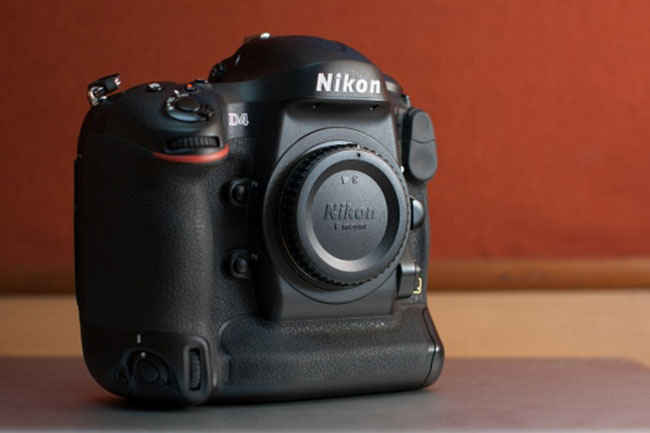 |
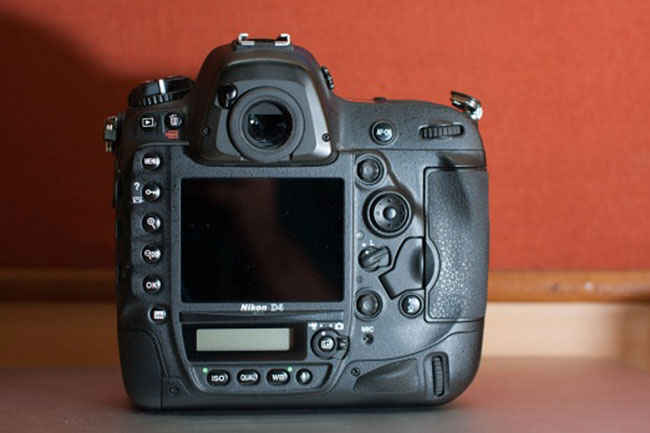 |
-100.jpg) |
-100.jpg) |
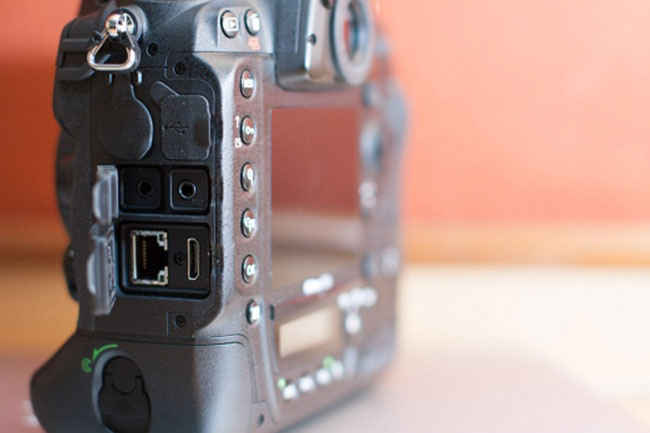 |
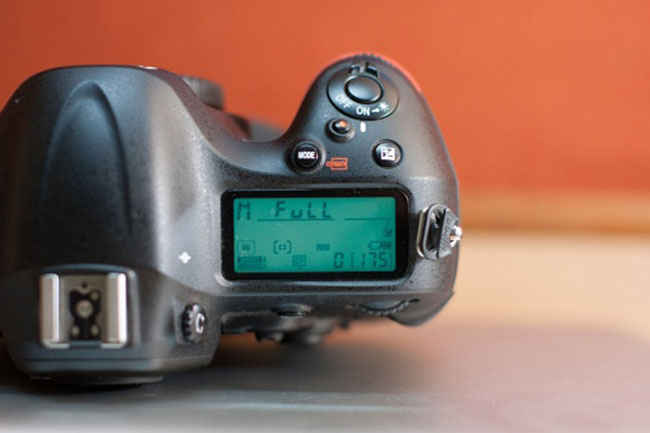 |
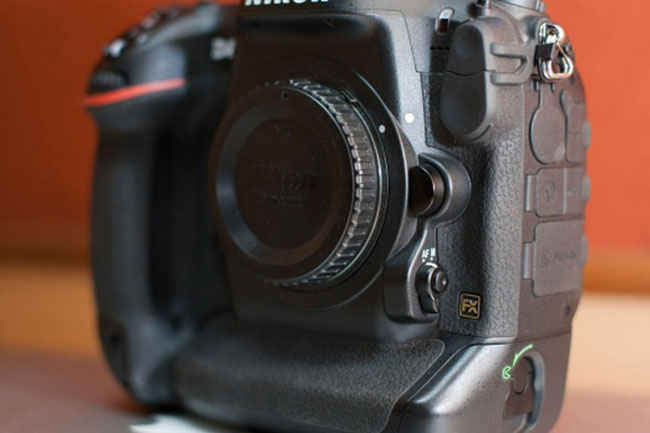 |
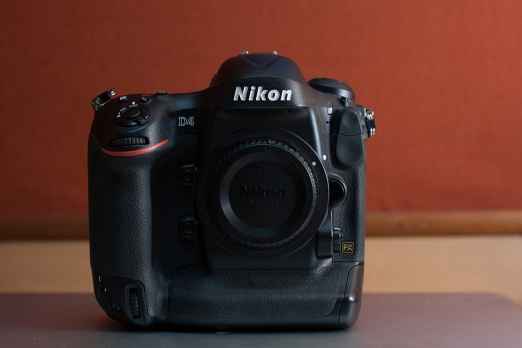 |
The D4 comes with an extensive system of weather sealing which makes is ideal for not just photography aficionados, but also sports photographers and hard core journalists. Of course, the weather sealing will only be effective when shooting with a lens that is also weather sealed, but chances are, if you’re buying the D4, you will only be using it with Nikon’s pro-grade lenses (which are all weather sealed too). In fact, while out on a shoot with the D4, we were caught off guard by the rain gods and stuck without cover in a torrential downpour. Since we were just a few frames short of wrapping up, we just continued to shoot. Being soaked in the rain did nothing to damper our spirits, or the camera’s performance. We just wiped the camera and lens dry (without removing the lens from the mount of course) and it continued to function like nothing had ever happened. We were quite tempted to drop test it too, but just didn’t have the heart to destroy our beautiful marble floor.
Features
There are a few very interesting features about the D4, some tweaked and some new that make it a very well rounded camera. For starters, it features a 16megapixel full frame sensor, that’s coupled up with Nikon’s newest EXPEED 3 image processor. The D4 also has an insane burst mode of 10 frames per second, which can be bumped up to 12 frames per second at the cost of AF tracking. Previously, faster burst modes were possible only in crop sensor cameras with a relatively lower megapixel count, so the fast 12 frames per second on a full frame camera are a testament of Nikon’s EXPEED 3 processor chip. We shot a game of basketball, pushing the shutter down and letting the D4 do its thing at full 10fps (with AF tracking) and 9 out of 10 shots were in focus. Thanks to Sandisk’s Extreme Pro CF cards (90MB/s write speed) we had no issues with the buffer filling up and we could continue shooting uninterrupted.
A feature that has been long requested by veteran photographers has been illuminated buttons, so as to be able to make it easier to work with the camera in little to no light. Nikon has been listening and pushing the On/Off switch past the ‘On’ position lights up all the buttons on the D4, along with the LCD screen on top, making it easy to change settings in the dark.
The Nikon D4 also gains a dedicated 91,000 pixel sensor for metering light, calculating white balance, balancing flash exposure, working out D-lighting and tracking faces. It makes sense to have a dedicated chip that handles all these tasks as they all relate to exposure and the D4 does a very good job at all of these. In our use, the metering was accurate 9 out of 10 times, regardless of the scene we shot. Of course, this is based on correctly exposing the image. For example, shooting a scene which contained mostly the sky would yield an image that was exposed for the sky, and hence the ground would be dark (given how the sky is generally two to four stops brighter than the foreground on overcast days). We seldom found ourselves repeating shots due to exposing issues.
Focus System
The Nikon D4 features a freshly designed 51-point Autofocus system based on the MultiCAM 3500FX Autofocus sensor. Nikon claims that the new sensor works “even in lower light” and for the life of us, we couldn’t figure out what that meant. That is until we actually got the D4 and forced it to do our bidding in a dimly light club. Using the camera in AF-C mode with all 51-points activated (AF-C means that focus tracking was enabled), we used an assortment of lenses (Nikkor 24mm f/1.4G, Nikkor 24-70mm f/2.8 and the Nikkor 105mm f/2.8 Macro) to see whether the focus would be effected by the focal lengths in any way and to our surprise, every single one of our shots was dead on. We’re talking about 600 shots.
We figured that a relatively static DJ was not a good enough test for the AF system in the D4, so we pushed off to a basketball court the next day to shoot some players in action. We asked two locals to go for a one-on-one session and shot them as they dribbled and shot. Again, the D4 had no problems keeping track of the players as they pulled off crossovers and speedy lay-ups. This time around, the keeper rate wasn’t a full 100%, but we found 9 out of 10 images were perfectly focused.
-165.jpg) |
-165.jpg) |
-165.jpg) |
-165.jpg) |
-165.jpg) |
-165.jpg) |
 |
Speaking of tracking, the D4 has a greatly improved 3D tracking mode that does really track smaller objects with greater effectiveness. We tracked a basketball being shot from the 3-point line various times and of the 15-18 odd frames per basket, got at least 10-13 keepers. The focus system also has an orientation sensor that retains the focus point selected relatively to the orientation of the camera. The fact that we do not have to grapple to change the focus points every time we change orientation comes as a great relief, and a huge time saver!
The focussing on the D4 is like nothing we’ve seen before (and we’ve shot quiet a lot of sport and concerts with all kinds of high end gear). Sports photographer and journalists alike will definitely benefit a lot from the D4’s focus system, which performs at par with what we have come to expect from professional grade DSLRs.
Image Quality
The images coming out of the D4 look wonderful, if you’re a skilled photographer. The camera doesn’t have a very “noob” friendly interface and is generally meant for someone who knows what they are doing. That said, the images coming out of the D4 are as good as you’d expect them to be out of any pro-grade DSLR. The colours are vibrant along with moderate levels of contrast. Each RAW file out of the D4 weighs in around 33-35 MB (a little more or less, depending on what ISO you shoot at), so be prepared to have some massive storage solution in place as you will be shooting a LOT, not because of the burst mode, but because this camera would make you want to.
-165.jpg) |
-165.jpg) |
-165.jpg) |
-165.jpg) |
-165.jpg) |
-165.jpg) |
-165.jpg) |
-165.jpg) |
-165.jpg) |
-165.jpg) |
-165.jpg) |
-165.jpg) |
-165.jpg) |
-165.jpg) |
 |
We’re going to break away from our usual trend of judging ISO performance in studio and talk about real life shots because that is where the D4 shines like a star. When we entered the venue of the previously mentioned concert, we were quite disappointed by seeing the ridiculously low levels of light (just overhead UV/blacklights and some tube LEDs running across the ceiling). We turned the ISO up from 400 to 4000 (yup, we’re badass that way) and eventually ended up juggling between ISO 6400 and ISO 8000. Close examination of the images post gig revealed that the images shot at ISO 8000 had some luminance noise, but hardly any chrominance. Essentially, the shots looked clean enough for us to want to print them out in a large size.
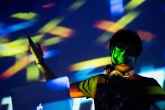 |
 |
 |
 |
Looking at the studio shots and the story is no different. The shots are absolutely noise free all the way up to ISO 6400. ISO 8000 shows some chrominance, but the levels don’t really change till ISO 12800. The full frame sensor’s per pixel quality coupled up with the “magic” of the EXPEED 3 couldn’t have us asking for more. A high-speed shooter with an excellent ability to keep noise levels at bay is something that might appeal to concert photographers as well.
|
ISO 200
|
ISO 400
|
ISO 800
|
ISO 1000
|
ISO 1600
|
ISO 2000
|
|
ISO 3200
|
ISO 4000
|
ISO 5000
|
ISO 6400
|
ISO 8000
|
ISO 10000
|
|
ISO 12800
|
ISO 16000
|
ISO 20000
|
ISO 25600
|
ISO 51200
|
Base Shot
|
Video
One of the main issues people had with the D3s was its relatively stunted video performance. Given that the Canon 5D MarkII had pretty much become the king of video DSLRs, everyone from amateur to professional filmmakers flocked to it. Nikon has had quite some time to bring their tech to play catch-up with the 5D MarkII and that is exactly what we expected to see in the D4 back when it was announced. Having shot with it, the story is entirely different.
The D4 is capable of shooting full HD video at 30, 25 and 24 fps. Pretty standard specs, but it can also stream uncompressed footage through the built-in mini-HDMI port to an external recorder. A feature we know for sure will attract many videographers to the camera. Why? Well, because we took this bad boy out to a concert and shot video footage at a mind boggling ISO 5000 (yes, we’re sort of crazy like that) and have prepared a small montage of the gig that you can see below.
As you can see, the noise levels in the video are zero to negligible. At a compression of 24Mbps, the D4 delivers stunningly crisp video, provided you use lenses to match. The liveview mode is quite good for acquiring focus, although we STRONGLY recommend using manual focus only, as trying to autofocus while filming will cause the footage to go out of focus momentarily, till focus is acquired again. The D4 offers full manual control for shooting video, although it even does an excellent job at exposure when using it in P (program) mode.
What Else is There
The Canon 1Dx would definitely be a strong competitor for the Nikon D4, when it comes out. Unfortunately, it has been plagued with a number of delays, but news is that Canon will start shipping them out in time for the Olympics. There is the Canon 1D Mark IV (read our review), which despite being an APS-H (1.3x crop) camera, is still a full-bodied beast that many sports photographers have come to swear by. It matches the D4’s pixel count and even has the capability to shoot at 10 frames per second. For almost a lakh cheaper, the Canon 1D Mark IV is an amazing alternative to the D4, if you’re willing to compromise on the full frame sensor.
Verdict
The D4 is, in simple words, a dream camera. The full frame sensor renders beautiful images and the rugged build of the camera makes it ideal for shooting in pretty much any condition. There really is nothing to dislike about this camera. However, one feature that we felt was a major downgrade (and hence a disappointment) was the battery. The D3s had a battery that was rated for 4600 shots, but for some reason, the new battery in the D4 tops out at 2200. We failed to understand the reason behind this downgrade, especially given that the D4 has improved video capabilities, and would probably be making an appearance in film-related work. Running out of juice in the middle of a shoot is a definite no-no.
The ergonomics make this camera a delight to hold, but for some reason, the button placement often requires the use of both hands. Changing ISO or white balance defaults required us to move our left hand from the lens to the buttons on the back, however, on Canon cameras, the ISO and WB buttons are normally placed right next to the shutter button, allowing these settings to be changed with just one hand. It’s not that big of a problem, but just something we feel uses up a few extra precious seconds.
Swapnil Mathur
Swapnil was Digit's resident camera nerd, (un)official product photographer and the Reviews Editor. Swapnil has moved-on to newer challenges. For any communication related to his stories, please mail us using the email id given here. View Full Profile


















